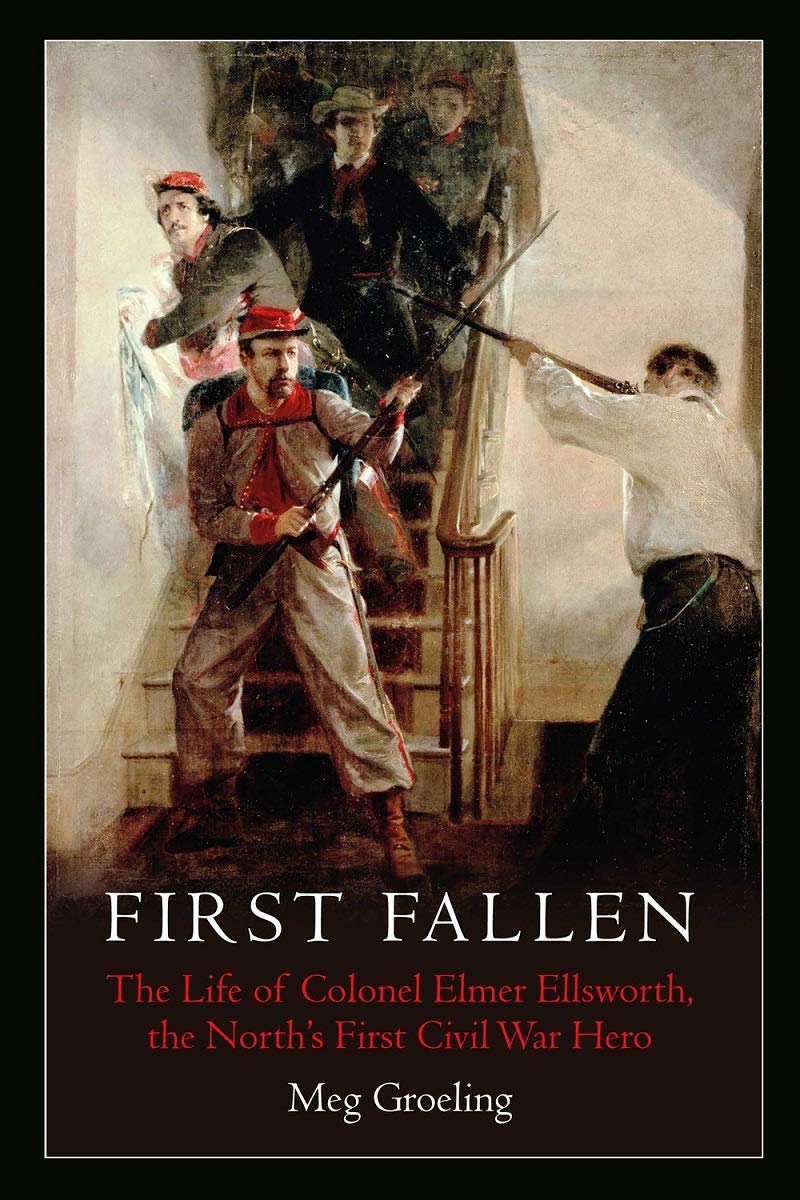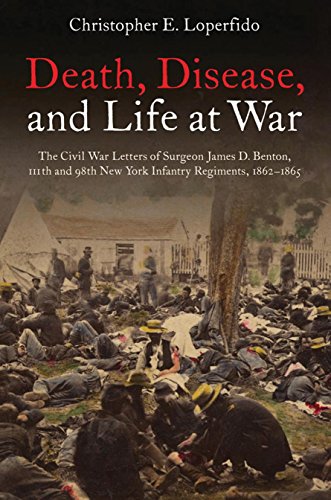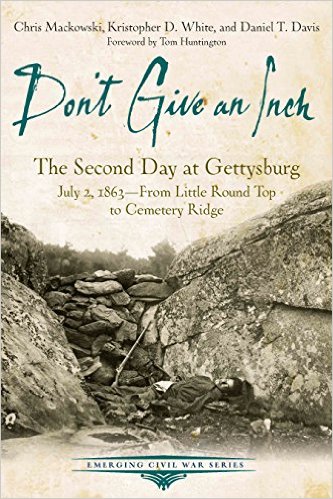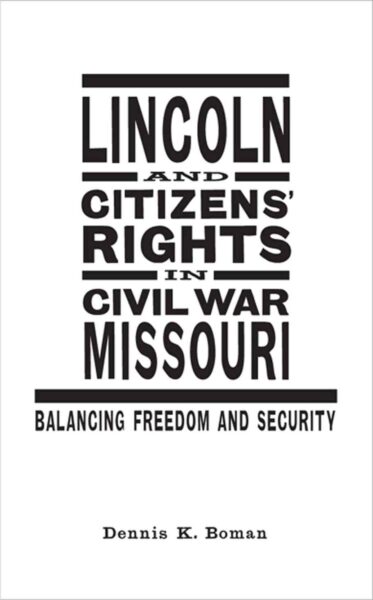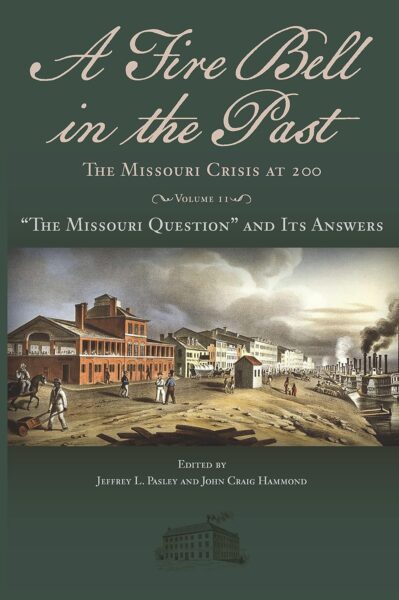In this work, Meg Groeling explores Elmer Ellsworth, the first Union Civil War hero. Most historians know Ellsworth for the end of his life, when he was shot and killed after taking down a Confederate flag in Alexandria, Virginia, in 1861. But Groeling insists his story is much more than this singular event. Not only was Ellsworth somewhat of a celebrity, but he was a close friend of the Lincoln family. Moreover, she argues he was the embodiment of the generation that came of age in the 1850s. Self-reliant, self-disciplined, and dedicated to the belief that one could rise above their circumstance, for Groeling, “Ellsworth is a perfect historical lens through which to examine this fresh face of America” (viii).
Ellsworth grew up near Saratoga, New York, surrounded by memories of the Revolution. Groeling argues that these experiences “served as a template for Ellsworth’s sense of patriotism, military duty, and his love of country” (10). Groeling illustrates that Ellsworth took this passion with him to the Midwest, beginning with a stay in Chicago and his first experience with local militia command. It was here that Ellsworth became involved with Zouave drill. Groeling describes this new military drill, based on French Algerian manuals, “as a combination of modern Cirque de Soleil and SEAL Team 6” (40). Though this might be a bit of an exaggeration, it was unique and relied on strict discipline and coordination. This earned him national renown when his U.S. Zouave Cadets went on a Northern whistle stop tour in 1860 to demonstrate their style of fighting. She contends that “there is no doubt that the tour was extremely effective in motivating thousands of meto [sic.] to join or create military units,” (101) though this might be an overreach.
Ellsworth’s performances certainly inspired imitation companies, but there is a lack of support for how much the rush to arms then and in 1861 had to do with Ellsworth and his men in particular. Her support for this claim comes from an article written by close friend John Hay, two months after Ellsworth was killed and had been proclaimed a martyr. Still, that there was some impact is apparent. Northerners knew war could be on the horizon, and the Zouaves displayed skill and patriotism.
Most importantly, Ellsworth’s success as a drillmaster brought him to Abraham Lincoln’s attention. On a trip to Springfield in 1859, the two men met; Groeling asserts that Ellsworth instantly impressed Lincoln, who offered to have Ellsworth come read law in his office. This, Groeling argues, “ensured that Ellsworth and his Zouaves would play an integral part in the presidential campaign of 1860” (69). Groeling details how Ellsworth and his militia connections filled the Wigwam with martial Lincoln supporters in the Republican convention in 1860. During the campaign Ellsworth served as a stump speaker for the Republican candidate, and when the time came for the victorious president-elect to make the trip to Washington, D.C., Ellsworth was his personal security guard. Through their time together, Groeling argues that Ellsworth became “like another son” to Lincoln (xvii). Once in Washington, Lincoln labored to make Ellsworth the head of a soon to be created Bureau of Militias, where the young soldier could rework the nation’s militia system.
This never occurred. When the Confederates fired on Fort Sumter, Ellsworth resigned his commission to form the 11th New York Zouaves, a regiment composed of firemen. Their first true test came on May 24, 1861, when Ellsworth volunteered them to take Alexandria. Here, he famously marched up the steps of the Marshall House, took down its massive Confederate flag, and was shot on the stairs by James W. Jackson, who himself was killed by one of Ellsworth’s men. Lincoln’s friend received a state funeral in the White House, and he was mourned across the nation as the first martyr of the Union. Groeling accurately describes that Ellsworth “became a cult-like figure in the eyes of the Union” (207). He was honored with songs, paintings, and poetry; especially as the death toll mounted, it was a way few others would be feted.
Groeling concludes this work with several appendices that detail the Southern reaction to Jackson’s death, the 11th New York at Bull Run, and the later years of people close to Ellsworth. Together, Groeling provides a detailed look that shows Ellsworth was not just one of the first to die, but a military reformer, Lincoln’s friend, and an aspiring officer.
At times, there are some analytical overreaches that put too much weight on Ellsworth. Groeling claims that his multi-state funeral “must have given comfort to forlorn families, as many of them simply never saw their loved ones again” (211). It is doubtful that many grieving families took much comfort in a funeral for a national hero in 1861. Similarly, declarations about his impact on the wider movements of the military spirit and the war can feel a bit stretched. Ellsworth lived a remarkable life, but in a long war with hundreds of thousands of dead, his impact was rather small. It is not surprising he was supplanted by other heroes as the war went on, just like the man who killed him, James Jackson, also lost his place in Confederate lore to men like Latané—and another famous Jackson.
With this in mind, First Fallen remains an interesting book that does find a unique lens into the mind of a Northern patriot prior to the Civil War. Historians have done much work on the pre-war South and its militaristic character. This is a welcome addition to literature that casts its gaze on the North and the men who rallied to the United States flag in 1861.
Kevin McPartland is a Ph.D. candidate in the Department of History at the University of Cincinnati. His research explores the relationship between the Southern press and Confederate national identity.
